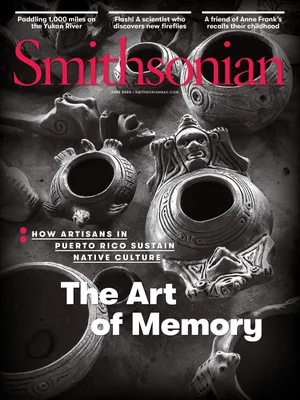Is This Endangered Orchid the Last of Its Kind?
Contemplating the portentous history and uncertain fate of an exceptionally rare flower
:focal(2868x2157:2869x2158)/https://tf-cmsv2-smithsonianmag-media.s3.amazonaws.com/filer_public/14/0b/140b5aa7-e673-48f2-b2bd-9f87d9d5634d/jun2023_b02_prologue.jpg)
The modern fascination with orchids may have begun with an accident. According to legend, in 1818, the English explorer William John Swainson was sending a shipment of plants from Brazil back to England; for packing material, he used what he thought were weeds. When the package arrived, those weeds—epiphytic orchids, which don’t need soil to grow—had bloomed into gorgeous purple flowers, of a species later called Cattleya labiata. The flowers’ beauty and their mysterious arrival triggered an acquisition frenzy, which British papers described as an “orchidelirium.” In the two centuries since, the world has yet to recover.
Orchids had a special allure on both sides of the Atlantic. Connoisseurs with means built special storehouses and funded orchid-hunting expeditions to places like Colombia, the Philippines and New Guinea. (Orchids grow all over the world but tend to be most diverse in tropical regions.) While humans have long been captivated by flowers—archaeologists have found drawings of flowers in Egyptian burial sites dating back more than 100,000 years—our fascination with orchids has been extreme. Orchid-hunters in the 19th century endured yellow fever and malaria, and risked being mauled by tigers or drowned in rivers—all in pursuit of a new species. Orchids remain a hot commodity: In 2005, a single plant of one especially rare species, the Shenzhen Nongke orchid, named after the university where it was bred, sold for more than $200,000, a record recent acquisitions have approached but not beaten.
But even less exotic orchids still exert a powerful magnetism. These bewitching blooms “have that fun characteristic of bilateral symmetry—it’s kind of like the human face. So you can kind of put a personality [on them],” says Justin Kondrat, lead horticulturist at the Smithsonian Gardens Orchid Collection. “And that’s why people are so inclined to write books about them, go halfway across the earth to collect them … just die for them.”
One of the most sought-after is the Angraecum longicalcar, a species that first entered the Smithsonian collections in 2016 in a collaboration with the Atlanta Botanical Garden. The flower is native to the central highlands of Madagascar but critically endangered, and conservationists worry it might become extinct in the wild—the only survivors will be in hothouses—because of habitat loss, poaching and other problems.
The most immediate threat to Angraecum is the potential loss of its pollinator. While many plants are generalists, with a wide number of insects, birds and bats that can pollinate them, Angraecum is a specialist. Its name, longicalcar, is a nod to its long nectar spur, or the hollow extension that secretes nectar to attract pollinators. Botanists say it might be the longest nectar spur of any orchid. This extraordinary spur necessitates a unique pollinator, alongside which Angraecum evolved. Yet no one has identified the creature.
If the pollinator is an insect, such as a moth, that could be trouble, because of the great die-off of insects the world has seen in recent decades. In that case, institutions like the Smithsonian may be essential to Angraecum longicalcar’s long-term survival. One important benefit of conserving imperiled species in captivity is the possibility of someday reintroducing the plant into the wild, a kind of Noah’s ark for fragile plants.
The Smithsonian Gardens Orchid Collection began in 1969 with a donation of 100 Cattleya orchid plants. Today the collection boasts more than 5,000 orchids, including three Angraecum longicalcar, one of which saw its creamy white flowers bloom for the first time this past November. When the Smithsonian first took possession of this Angraecum, it was a seedling, just an inch tall. Today it’s two feet tall and four feet across. While nobody can say how long it will live, there are orchids in European collections that have remained alive since the 1800s.
But Angraecum longicalcar, like many orchids, has a fail-safe: It is capable of asexual reproduction without a pollinator, producing little side shoots called keikis. If the shoots are separated and replanted, new but identical plants will emerge, perhaps buying this precious species precious time.
